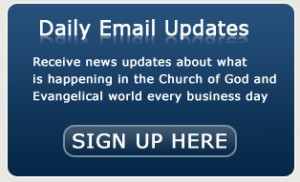The Burgeoning Audience Churches and Ministries Are Missing
Every year, between Sept. 15 and Oct. 15, the United States celebrates Hispanic Heritage Month. Government entities and businesses recognize the culture and contributions of those born in Latin American countries—particularly Mexico, Guatemala, Honduras, Nicaragua, El Salvador, Chile, Belize and Costa Rica, all of which celebrate their independence days during that time.
By Phil Cooke
To understand why this should matter to churches and ministries in North America, I spoke with Ivan Leon, founder and chief strategist at the Kerux Group, a marketing firm that’s helping redefine how faith organizations interact with Hispanics. Here is his response:
“Brands, politicians and the entertainment industry already understand that Hispanics are a key engine for growth in the next 30 years. And they are making bold moves to win over this audience, from hiring executives with a multicultural background to shifting advertising dollars from English to Spanish or bilingual audiences, to producing content that is culturally relevant.
“Unfortunately, churches, ministries and Christian businesses have yet to seize a clear vision for how to impact the first, second and third generations of Latinos that now call the United States their home. As a result, they are missing out on the opportunity to engage what is currently the most receptive and responsive audience. In conversations with nationally renowned Christian leaders, I share the following reasons to show them why that is the case”:
Satisfy their spiritual curiosity. Hispanics represent a group in spiritual transition. The Pew Center found that almost 25 percent of all U.S. Hispanics have abandoned their Catholic traditions and embraced Protestantism or, in lesser degree, no religion at all. The main reason for their departure is the desire for a more personal experience with God. Their religious migration is driving the growth of some mainline denominations, but it is also causing a seismic transformation in the demographics, worship and theology of the congregations that they have joined (as well as those that they have left). The energy invested in exploring a new faith shows how much spiritual matters matter to Hispanics.
Engage the most connected audience. Compounded with their spiritual readiness is also the fact that Hispanics are easy to reach, especially in the age of digital media. They surpass any other group when it comes to using smartphones, participating in social media, watching streaming video and shopping online. This trend indicates that faith organizations must modernize their communication approach in order to engage this emerging audience on the channels to which they are tuned.
Inspire their generosity. Contrary to conventional wisdom, a Spanish outreach can be self-sustained. The majority of Hispanics households earn between $40-100K annually. When it comes to giving, their generosity level is on par with Caucasian donors. But according to Diversity in Giving, the study also cautions that traditional, direct response channels won’t work (back to the point above) and that the message must align with heartfelt causes or products that celebrate their heritage. Clearly, the shortage of contributions from Hispanics is not due to lack of funds or interest. Instead, it’s due to a disconnect in strategy.
Impact the next generation. Hispanics form the largest and youngest demographic group. Over half were actually born in U.S. territory and are being assimilated into American life. They are the doctors, lawyers, scientist, journalist, and even preachers of tomorrow. Any organization that is thinking about propelling its influence unto the next generation would be wise to begin engaging them now.
An internationally known writer and speaker, Phil Cooke has actually produced media programming in nearly 50 countries around the world.
(Source: ministrytodaymag.com)




